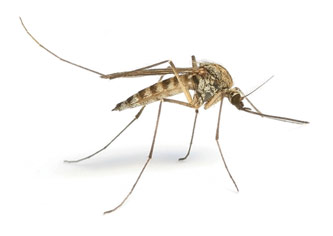Malaria’s Big Surge
The developed world has an insatiable appetite for food, and the developing world is doing everything in its power to meet the ever-growing demand.
But while the short-term economic benefits of doing so are apparent, the long-term negatives of this agricultural explosion aren’t.
Kelly Austin is working to change that.
Austin, an assistant professor of sociology and anthropology, has developed a unique niche in academia: She studies how global economic forces—in particular, the economic inequities between the developed and developing worlds—affect health and environmental conditions in some of the world’s most economically disadvantaged regions. After previously conducting research that linked coffee exports to a host of ecological, economic and social imbalances, Austin late last year published a new paper that shows that increasing rates of agricultural exports in Southeast Asia and sub-Saharan Africa are leading to spikes in the rate of malaria. It’s a growing health problem that continues to fly under the global radar.
“I was really interested to learn about the continued high global burden of malaria,” Austin says. “It’s a forgotten disease that people don’t really think about.”
According to Austin, over 3 billion people are at risk of acquiring malaria, and there are over 220 million cases annually. Almost 1 million die of malaria each year, and most of these deaths are among children below the age of 5. By some measures, it is a bigger global health issue even than HIV/AIDS.
As Austin began investigating the topic, she found that while global malaria rates had declined for much of the 20th century, they began climbing again in some regions in recent decades. Rates were particularly high, she found, in the poorest parts of Southeast Asia, Sub-Saharan Africa, and in the Amazon forests of Brazil. What these regions had in common, Austin says, were fast-growing agricultural operations—and the deforestation that allowed those operations to take off.
Deforestation, she says, appears to be a prime driver of the rising malaria rates.
“It was really interesting to learn how there were so many mechanisms by which deforestation could impact malaria rates,” she says. “When you fell trees to clear land, you’re exposing to sunlight pools of water that had been previously shaded. And the stumps that you leave behind are prime mosquito habitat as well.”
But there are even more problems, Austin notes. Deforestation inevitably leads to loss of biodiversity and can also cause widespread changes to the nutrient base. Bird populations are reduced, leading to more mosquitoes. It’s a devastating chain of events, and the problem may only get worse. “These nations are naturally positioned in areas that are primed for agricultural production, and they should [seek economic gains],” she says. “But clearly, research like this indicates ... that food that is produced for export on this grand scale is more likely to entail environmental and health costs that could stifle development in the long term.”
Posted on:


